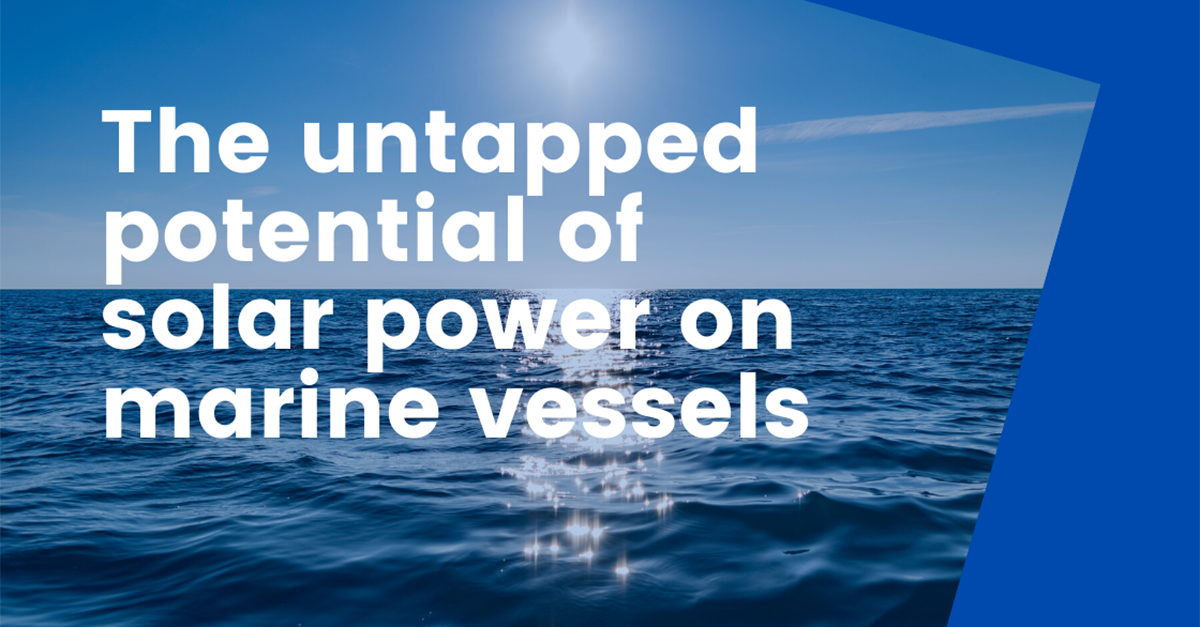Wherever the sun shines, solar panels are there working in all sorts of capacities. Small panels power individual lights. Mid-size panels offer electricity for homes and businesses. And utility-scale solar plants help power entire cities.
The installations have grown rapidly. In 2017, worldwide photovoltaic capacity increased by 95 GW, with a 34% growth year-on-year of new installations. Total installed capacity exceeded 401 GW by the end of 2017. That’s enough to supply 2.1% of the world’s total electricity consumption.
Taking solar power out to sea
But is there a place for solar power in the marine industry? Yes, most definitely. The marine industry remains the world’s sixth-largest source of man-made greenhouse gas emissions – with a whopping 800 million tons each year. The industry seeks to curb these emissions and move in an environmentally favorable direction. Since it doesn’t produce greenhouse gases, solar energy remains the most promising source of renewable power in land-based operations that can curb pollution.
A vessel is a mobile power plant. It must generate all the power used on board. Helping to do so, advancements in power electronics allow many different types of energy sources to be used simultaneously and efficiently. Solar power can feed into the vessel’s onboard microgrid to reduce the cumulative load from other sources.
Alternatively, solar energy can also power individual components with backup power provided by the vessel’s other sources. Moreover, highly efficient batteries can store solar power for future use when it is not used straight away for onboard vessel needs.
Who benefits from solar on board?
Can solar power be used as a vessel’s sole power source? Yes. In 2012, the MS Tûranor PlanetSolar distinguished itself as the first vessel to travel around the world using only solar power. On the ship, nearly 30,000 solar cells, covering an area of 512 square meters, generate up to 93 kW of power. Meanwhile, 8.5 tons of lithium-ion batteries store excess energy to power the vessel at night and under cloudy conditions.
However, today’s solar panels require a great deal of area to capture the sun’s rays for conversion to electrical power. This limits the amount of energy that can be produced on board a vessel. As a result, it is not always practical to fit solar panels on existing vessels.
Nevertheless, new designs featuring more surface area can take advantage of solar panels easily and increase their energy production. Passenger ferries with large roofs and other large vessels can incorporate solar panels as well, adding substantial power generation capacity. Cruise ships may also gain an attractive benefit from the implementation of solar arrays, as those can increase their appeal to environmentally savvy clientele.
Powering the future of marine
In the future, the marine industry may use more advanced technologies, such as solar power collecting paints or even sails made from solar PV cells. These advancements are critical in the adoption of greater amounts of solar energy use on vessels due to the limited surface area available. The incentive to develop new technologies is strong as fuel prices may soar and carbon taxes can eat away at the owner’s profits. Yet, when the sun is shining, the energy is clean and, best of all, low cost.
Solar power remains an interesting and largely unexplored area in the marine industry. As efficiency and clean power continue to gain on today’s ships, solar should be part of the equation.
So, the next time you are at the beach enjoying a sunny day, imagine the power of the sun’s rays – and how that energy can be put to work to move the marine industry forward.
Author: Peter Reindl
